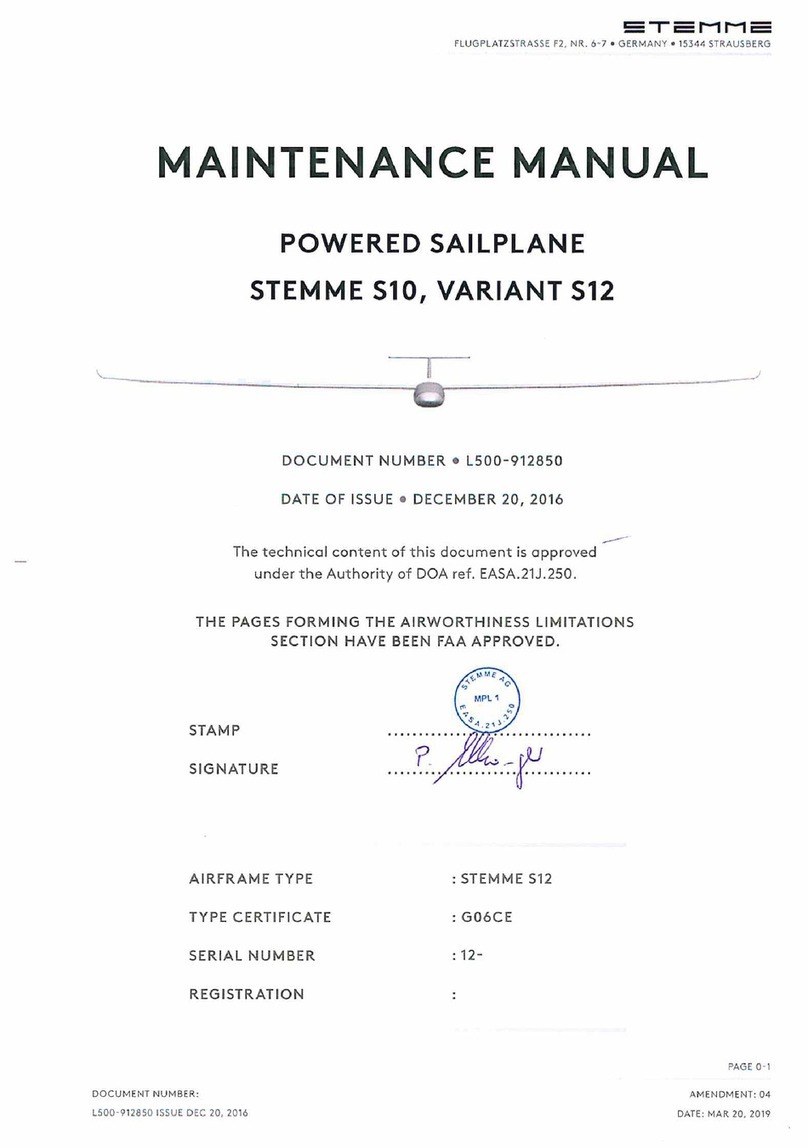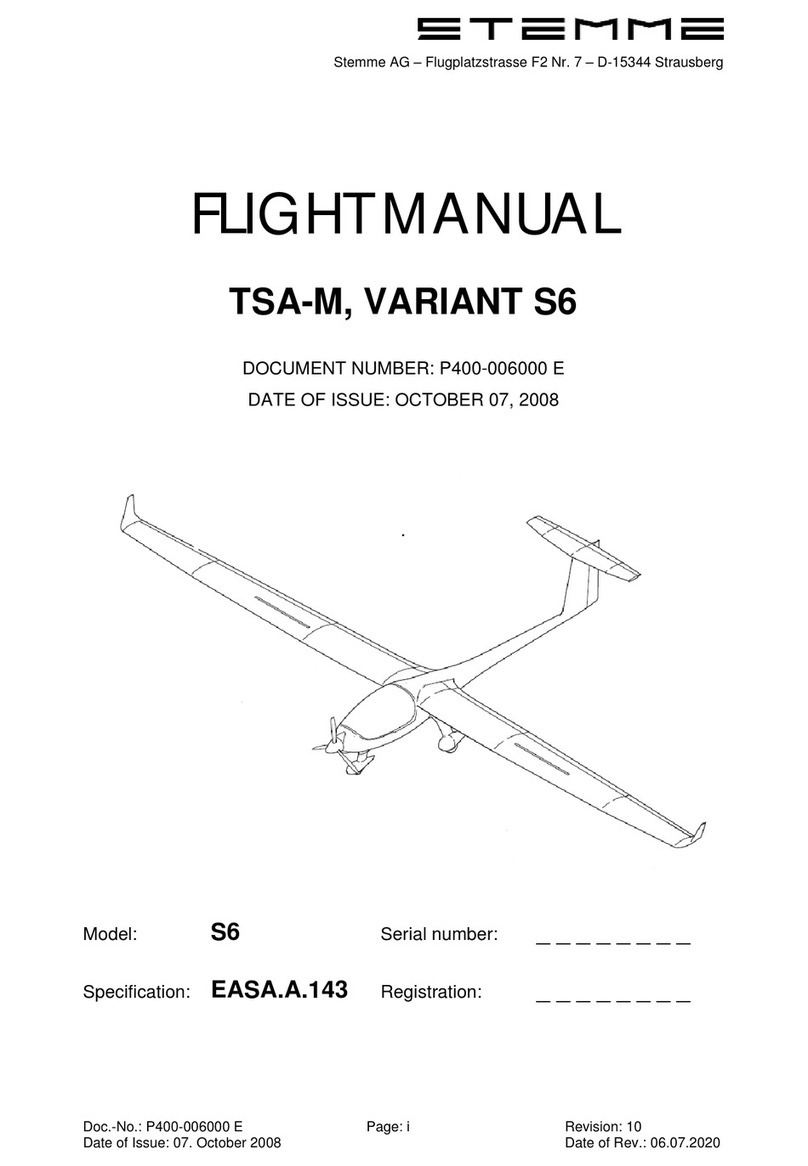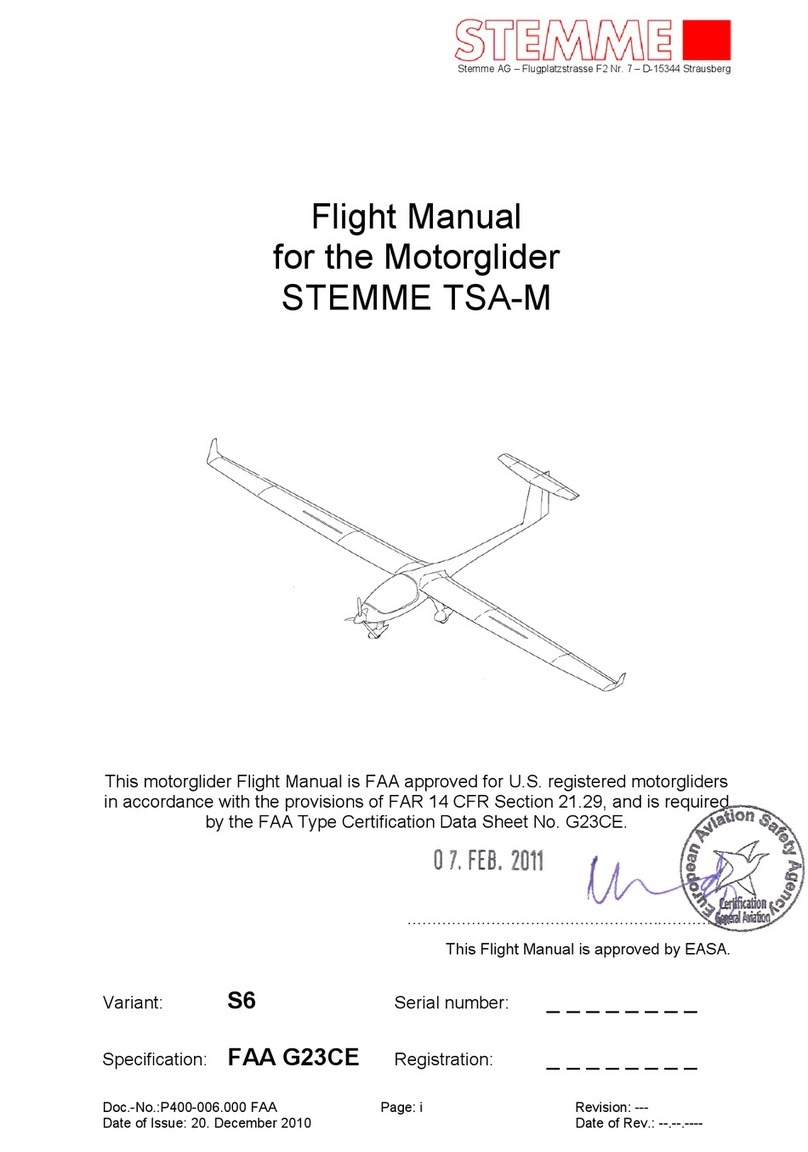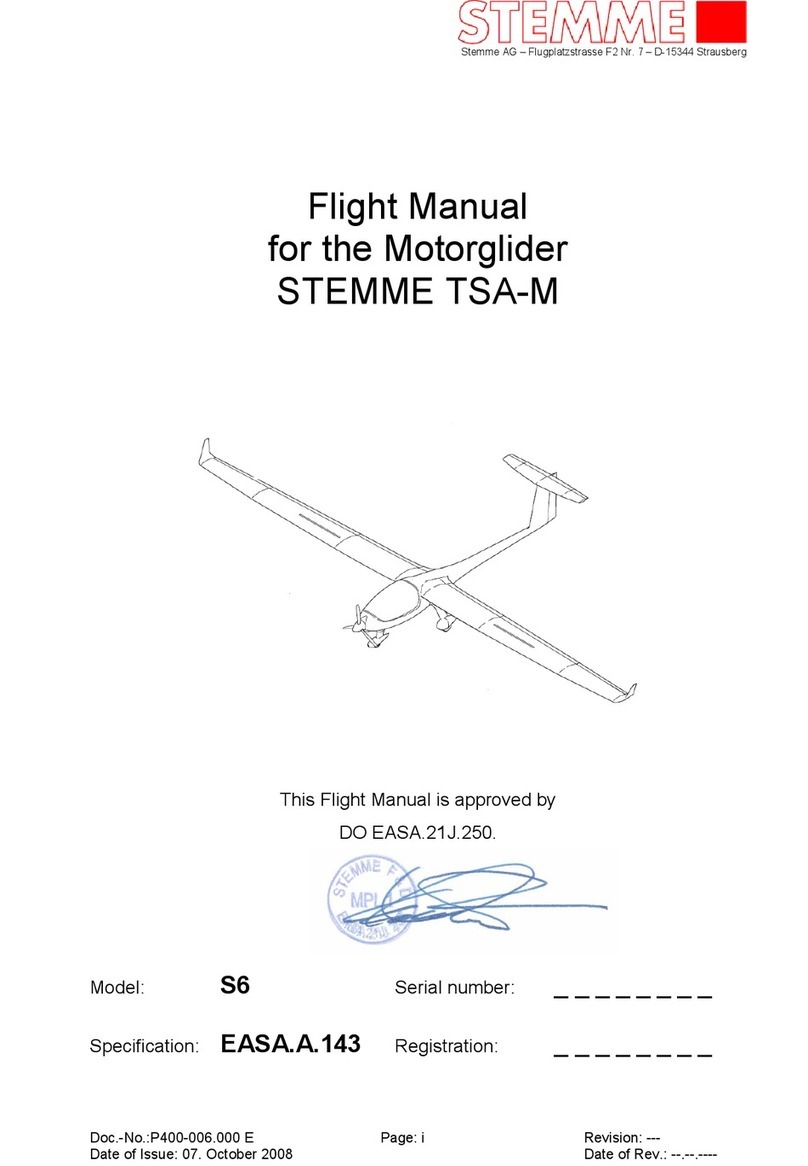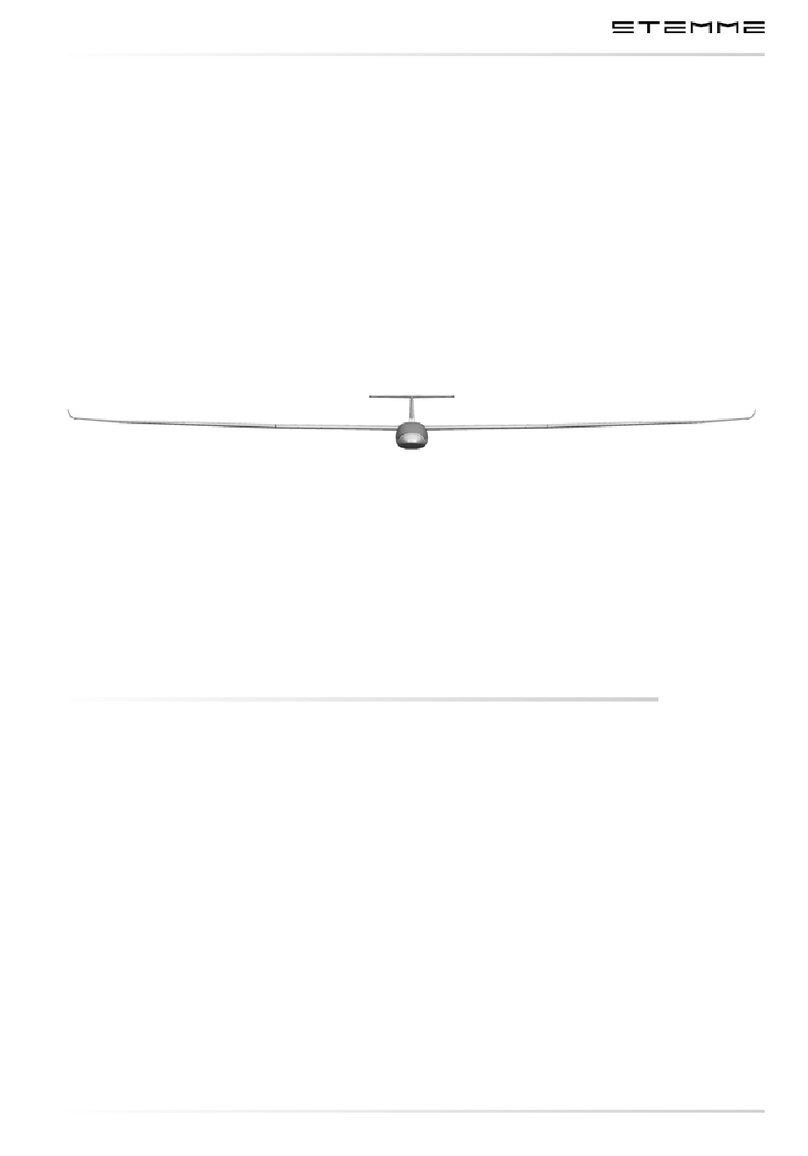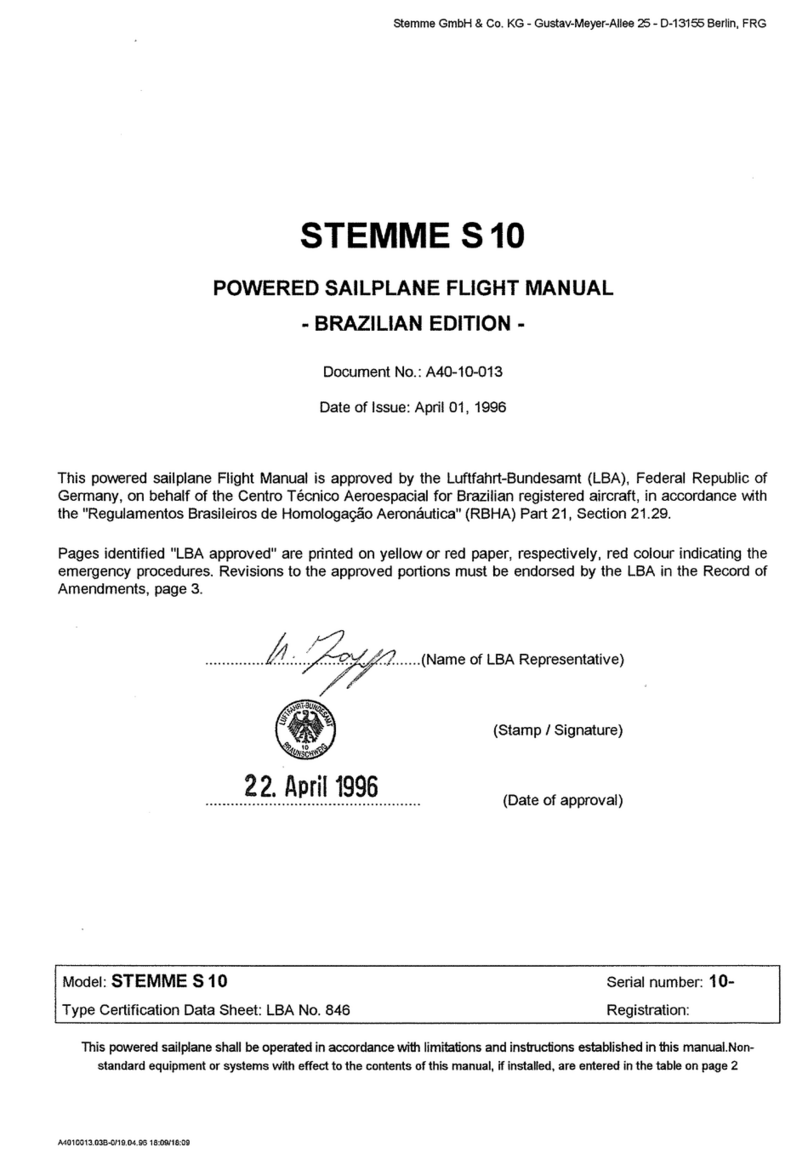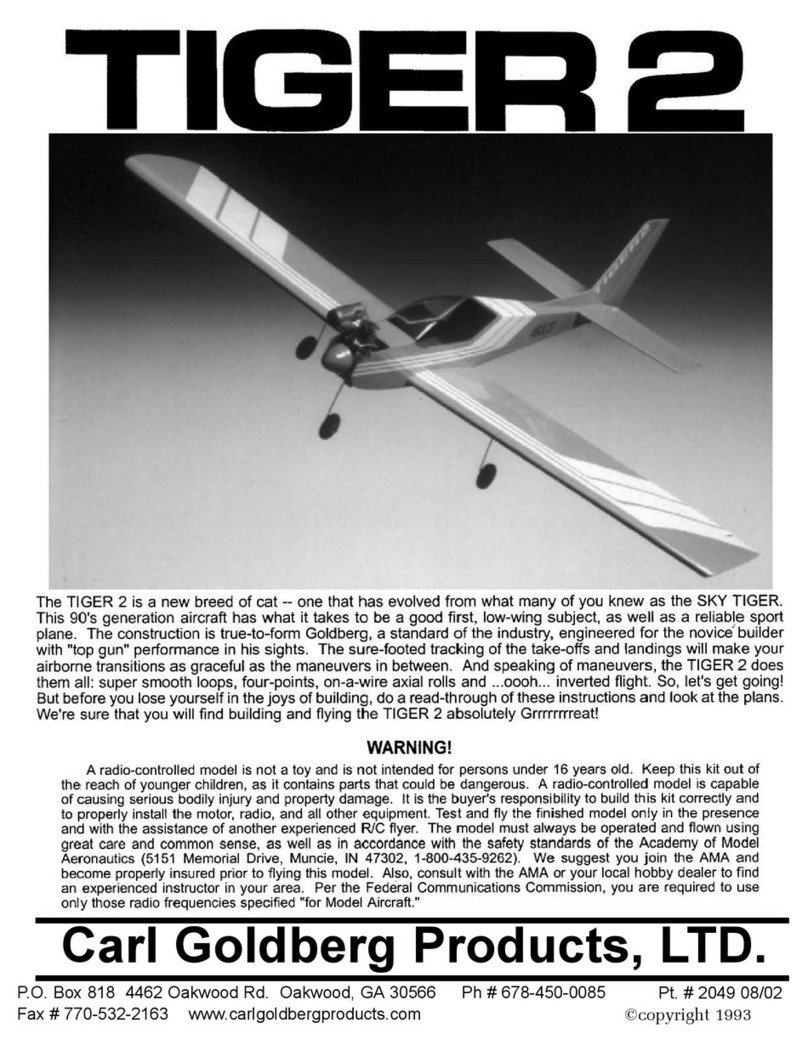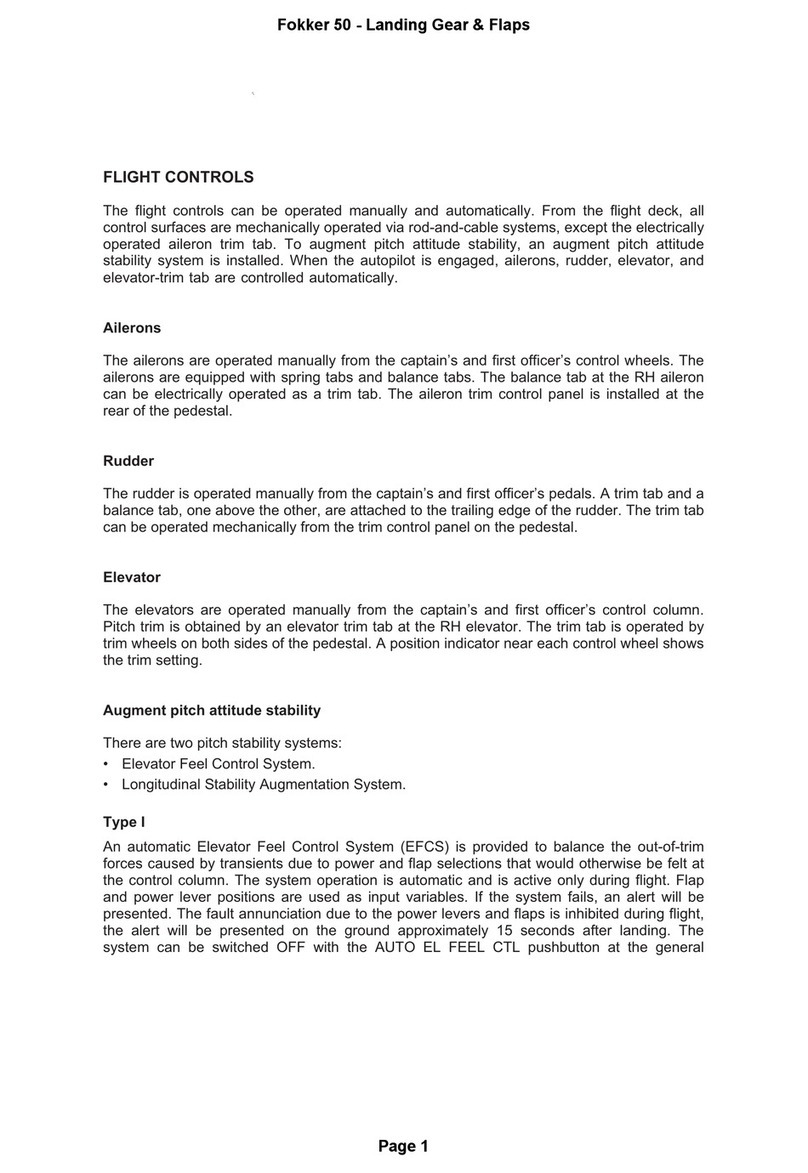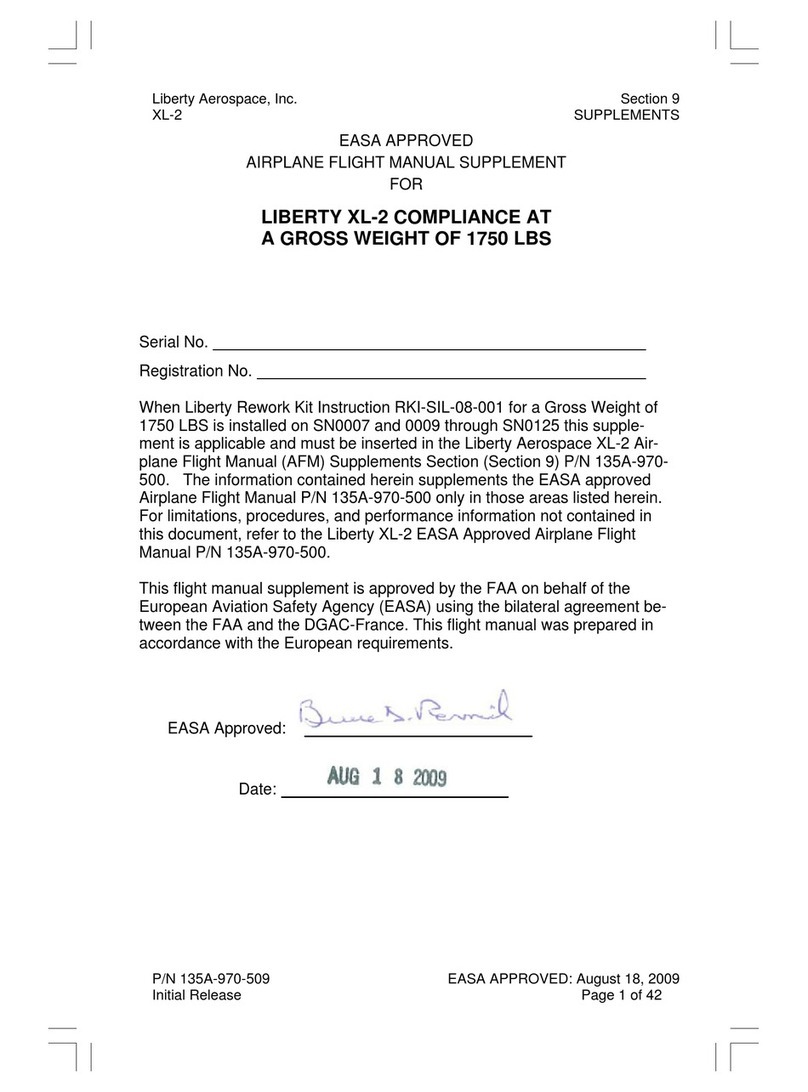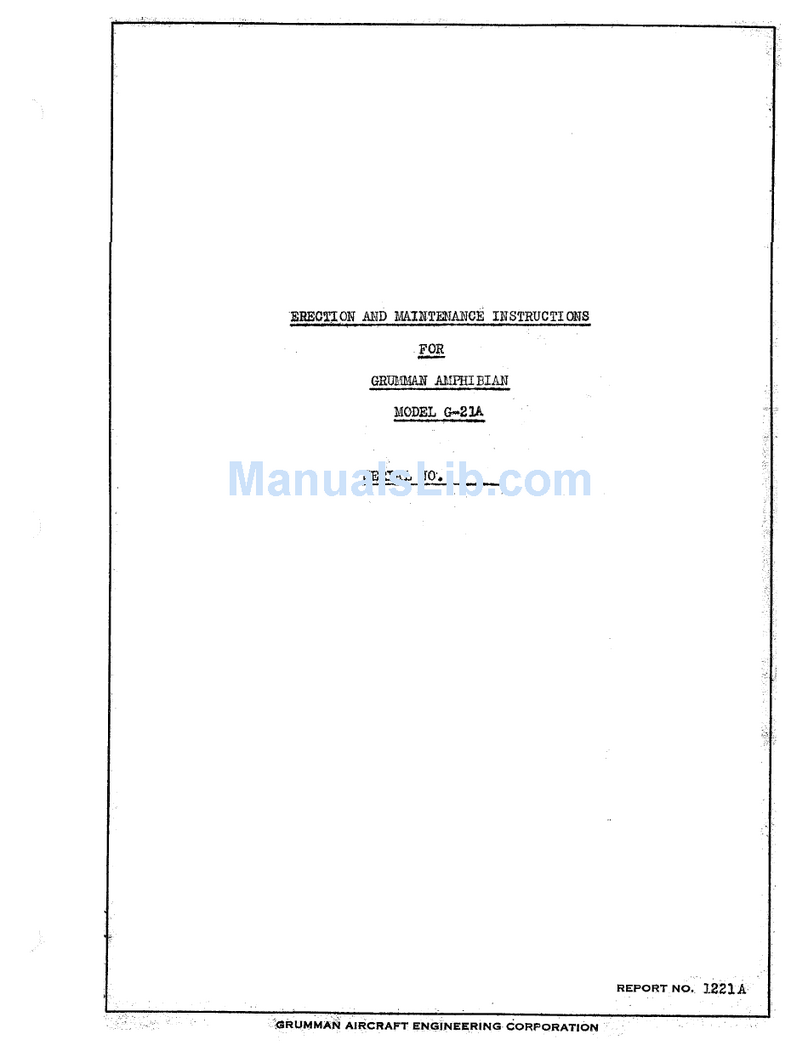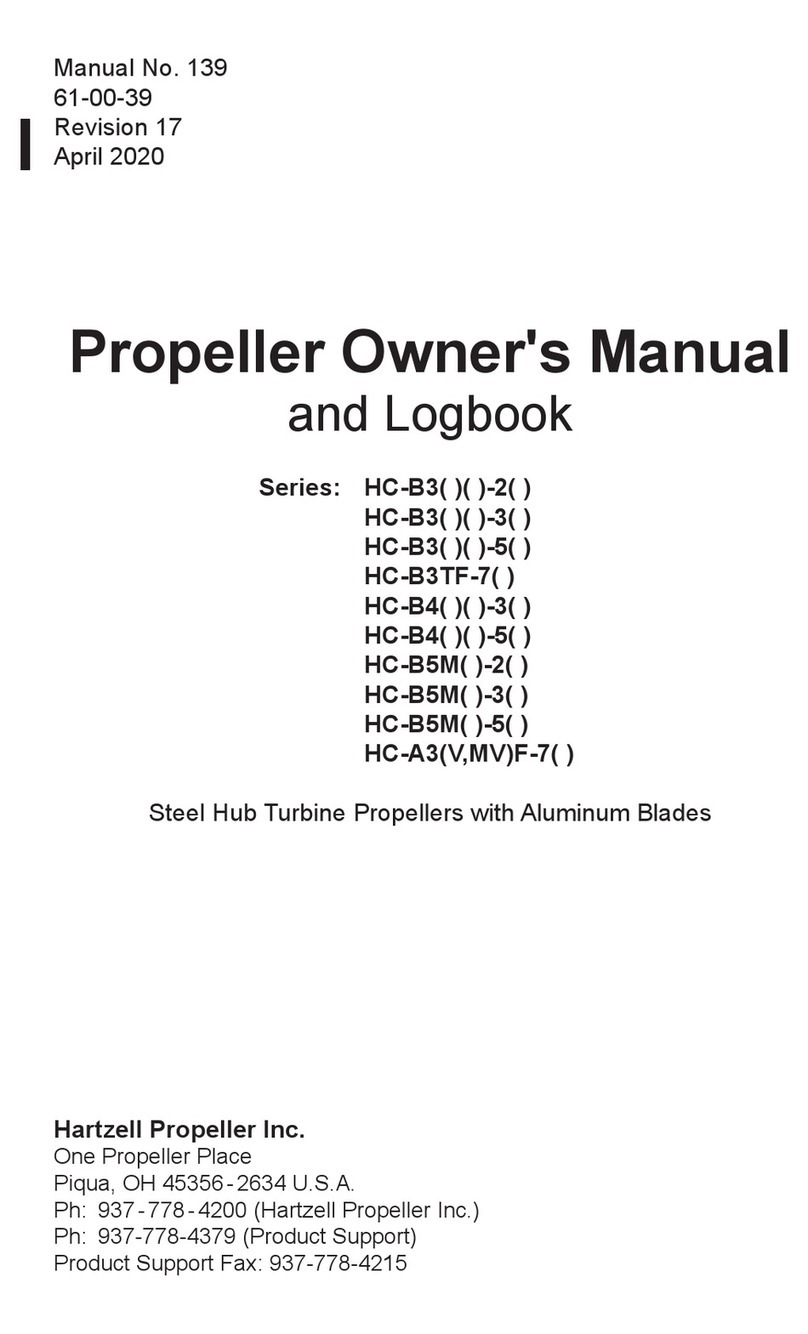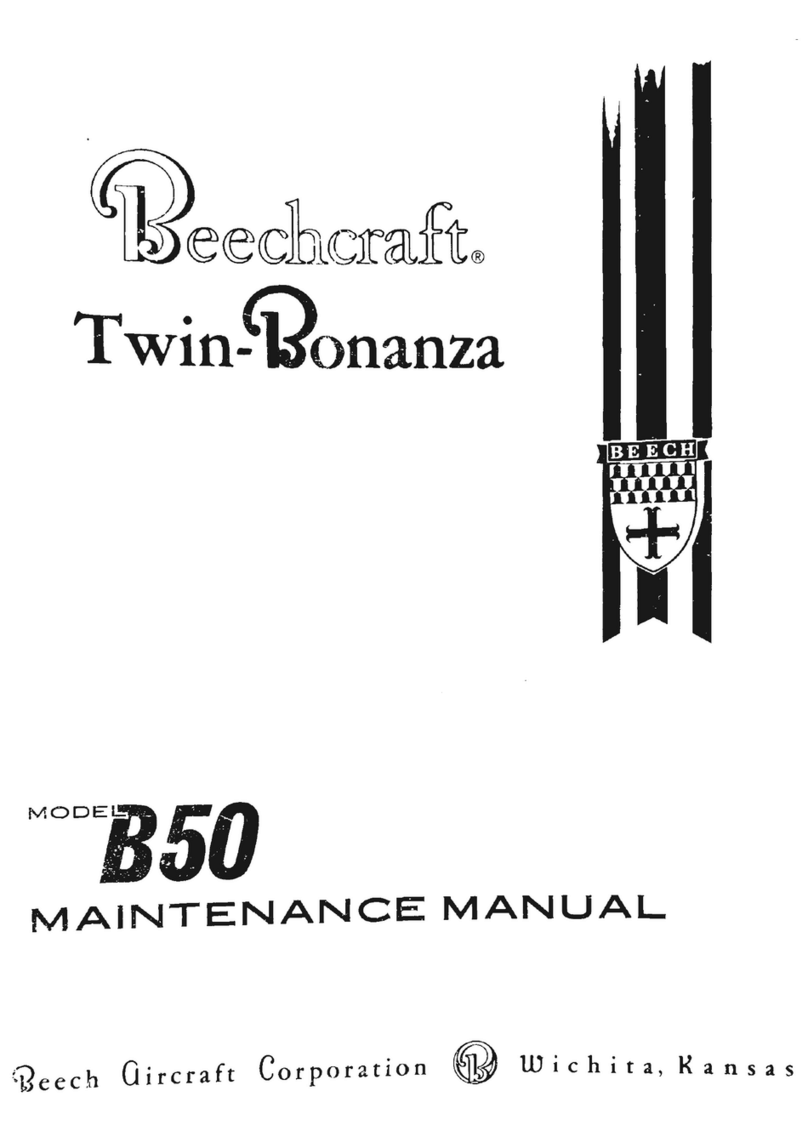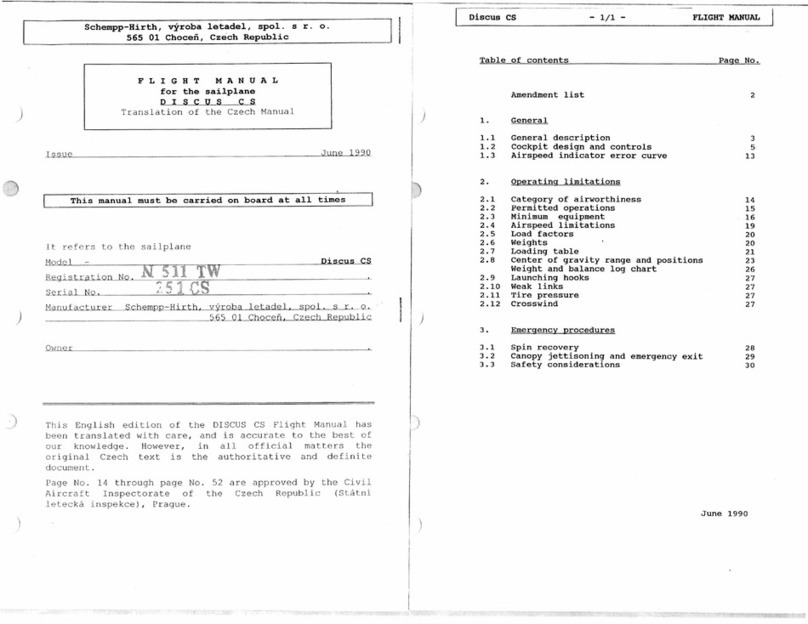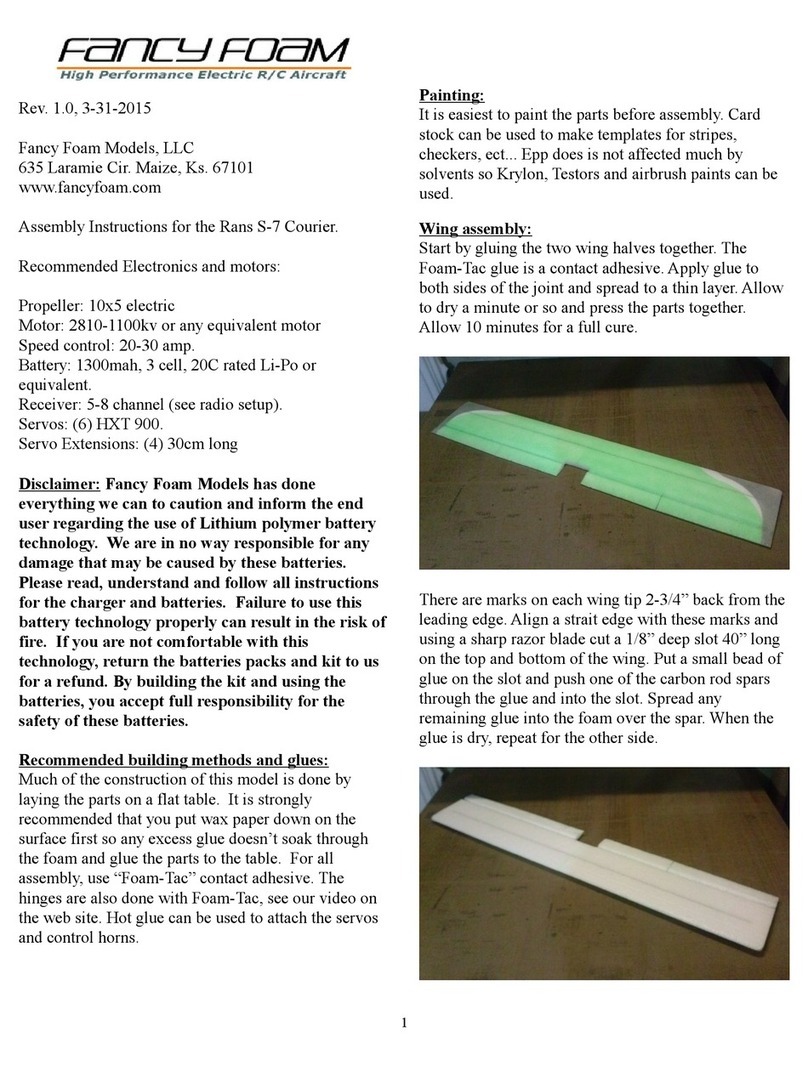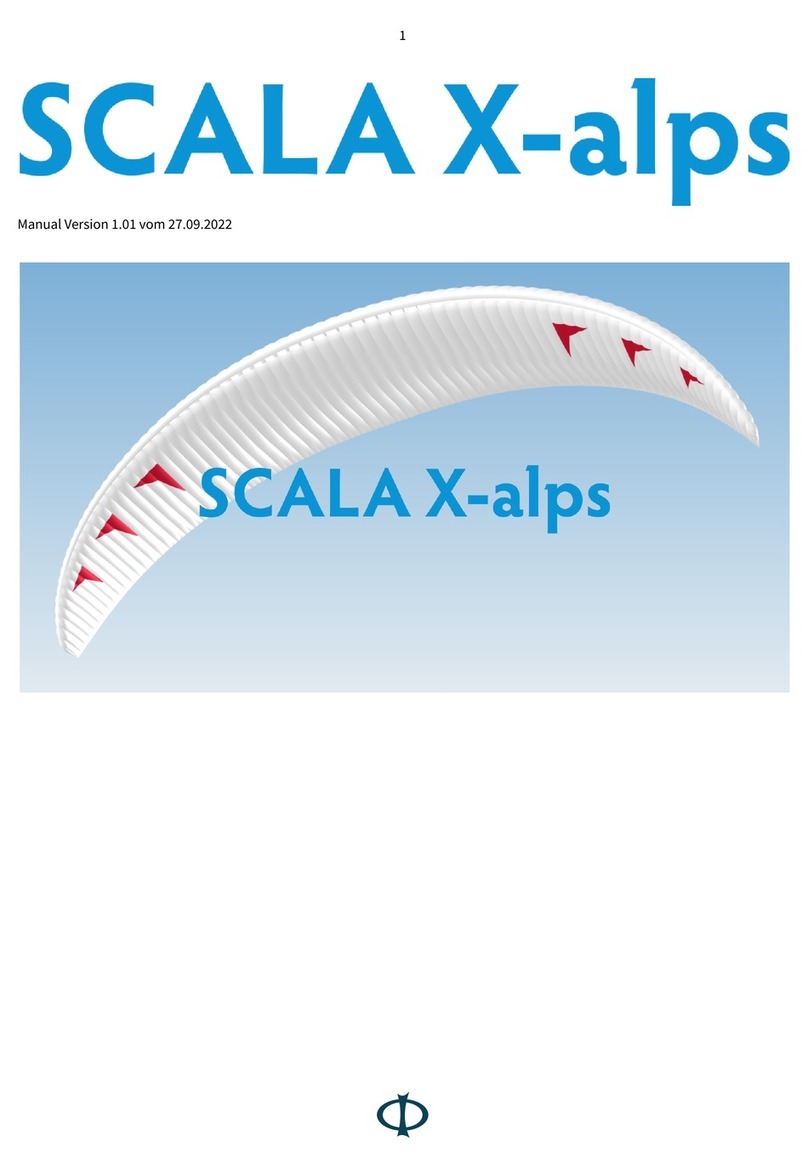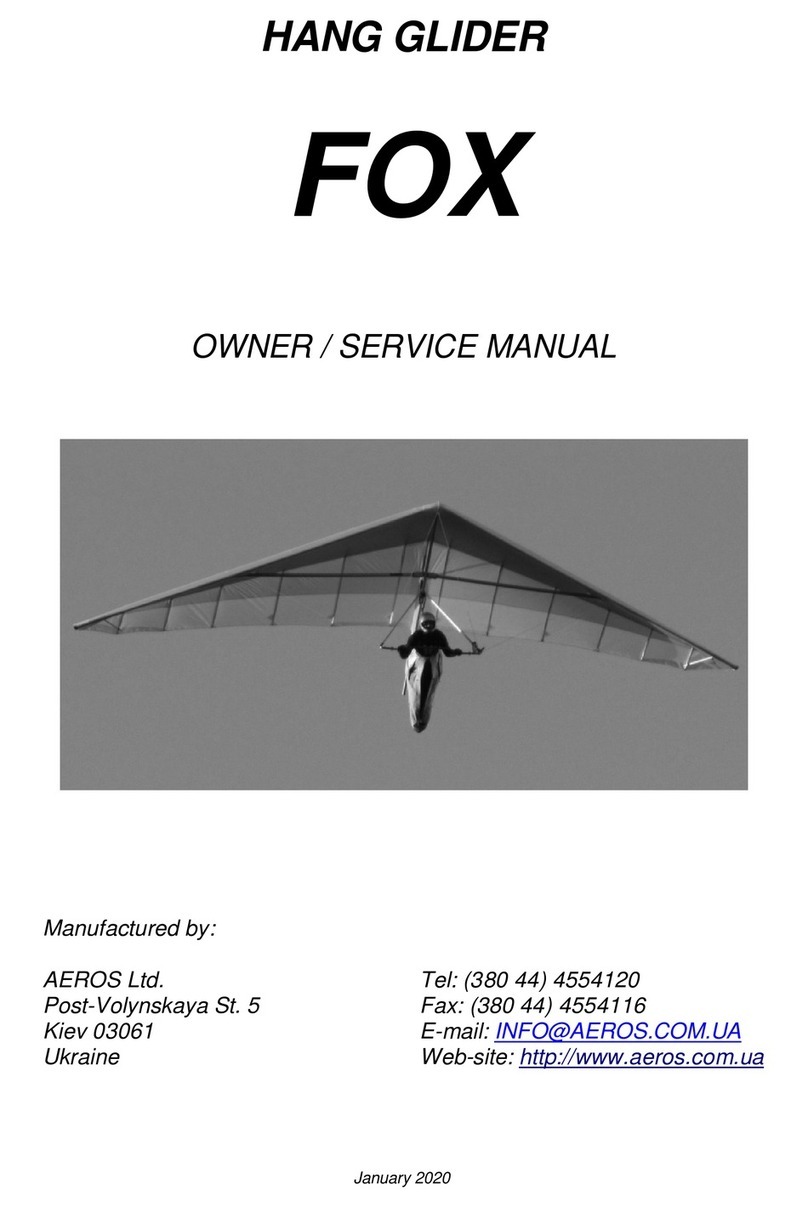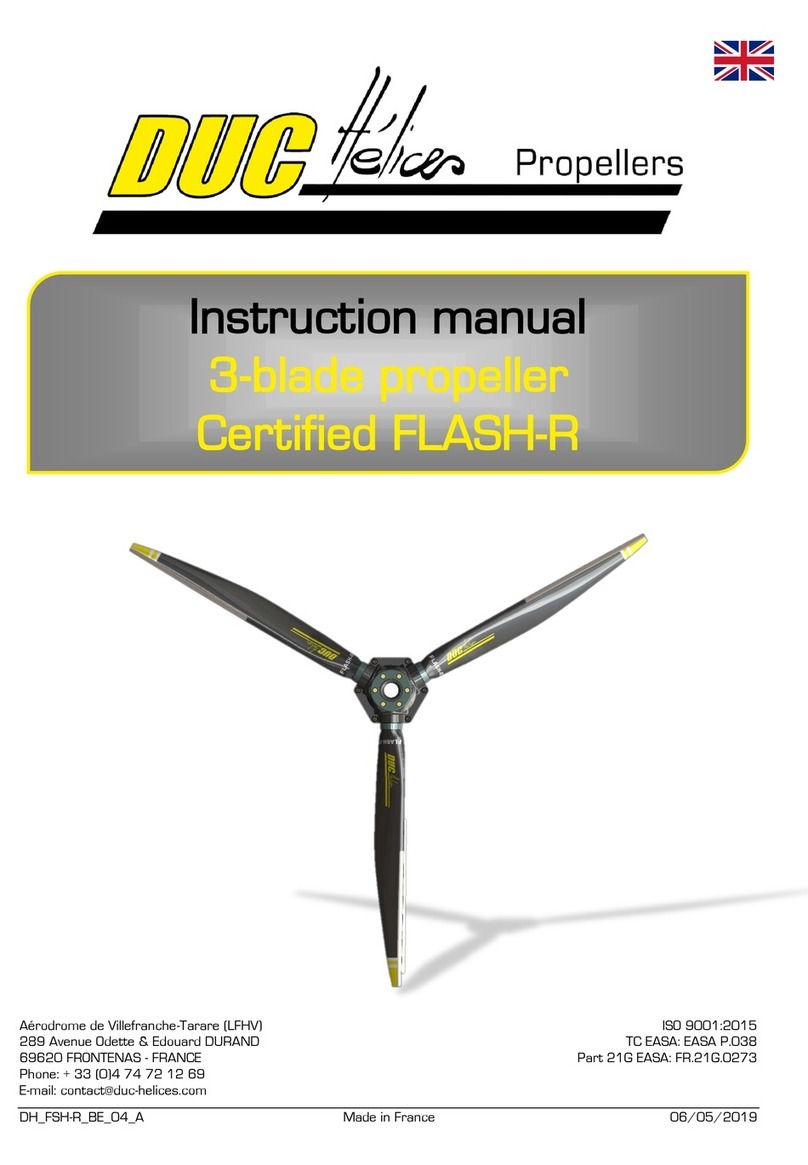Maintenance Manual STEMME S10
Date of Issue Oct. 01, 1990 page: 17
Amendment No.: 19 Date: Jan. 10, 2014
A4010021_B19.doc
Doc.No.: A40-10-021
−Drive shaft made of carbon fibre reinforced composite material
−Flexible coupling on transmission gear side: flexible coupling with elastic angular and torsional flexibility.
Lateral flexibility is eliminated by means of a centring bearing.
−Transmission unit: one-stage quintuple high performance V-belt transmission unit with maintenance-free
sealed antifriction bearings. The belt pulleys are subjected to a special hard anodising process. The
transmission unit is supported in the foremost fuselage frame by four mounts with non-linear characteristics
for vibration absorption.
3.4 Landing Gear
3.4.1 Main Landing Gear (figure 3.4.1.a)
Left and right landing gear legs each supported by two sleeve bearings in the central fuselage framework,
swivel axis in flight direction. Trailing arms hinged with sleeve bearings in the legs. Elastomere spring bars in
the rear tube of the leg.
Retraction and extension with one electric spindle drive for each side.
Retraction: one after the other - first the left landing gear leg, then the right one together with the gear
door, and then the left gear door.
Extension: first the left gear door, then the right landing gear leg including gear door, and then the left
leg.
The Gear-down position is locked by means of over-centre locking of the operating arms.
Electric stop switches for "DOWN" position: on the associated operating arm.
Electric stop switches for "UP" position: at the front of the wheel well on the associated side.
Indication of "DOWN" position by one green LED (light emitting diode) each for the left and the right gear leg
on the right face of the instrument panel. During extension and re-traction of the landing gear legs, the
corresponding LED is blinking red. With the landing gear in the retracted position, the diodes extinguish and
the position of the spindle drives is fixed by means of blocking brakes above the spindle drive motors. The
brakes are locked by springs and released electrically during operation of the spindle drives.
The wheel well is covered by two landing gear doors; the right-hand door is coupled via a spring element
directly to the right gear leg. The left-hand door is closed via a bowden cable which is operated also by the
right landing gear during the last part of its track.
Electric landing gear warning: acoustic warning activated by switches on the air brakes control shaft beneath
the left stick cover.
The disk brakes on the main L/G wheels are operated hydraulically. The main cylinder for both the left and
right wheel is located on the LH control stick, on RH stick optional. The pressure line from the main brake
cylinder to the brake callipers of the wheel brake in the center fuselage are designed as metal-shielded brake
hoses. The brake fluid reservoir is located in the landing-gear bay, cabin rear wall.
The parking brake valve to set and to release the parking brake is located on the floor panel console in front
of the LH control stick. The parking brake valve is operated by a lever respectively rotary handle.
The brake action is simultaneously on both main wheels. Maximum brake pressure for the system layout is
115 bar / 1668 psi, maximum allowed system pressure is 200 bar / 2900 psi.
Only for hydromechanical Brake System:
The master cylinder for both the left and right wheel is located in the wheel well at the front wall (pressure line
to the wheel cylinders by short metal tube, T-type distributor and metal-shielded brake hoses). The
connection to the hand operating lever on the left stick (right stick optional) is made by a bowden cable,
adjustable at the master cylinder. The hand lever can be locked in the operated position for use as a parking
brake.
Main Landing Gear Emergency Extension
Mechanical emergency extension system: By operating two pulls, the connection of the electric landing gear
spindle drive to the operating arm is successively released via bowden cables. The landing gear legs extend
by gravity to the "DOWN" position. The operating arms are pressed into the locked position by means of
spring clips. For operation, the proper sequence is to be adhered to: first the right gear leg, then the left gear
leg. The right landing gear leg is equipped with a catch strap in order to prevent the legs from getting stuck in
case of incorrect operation (i.e. left leg first).






















